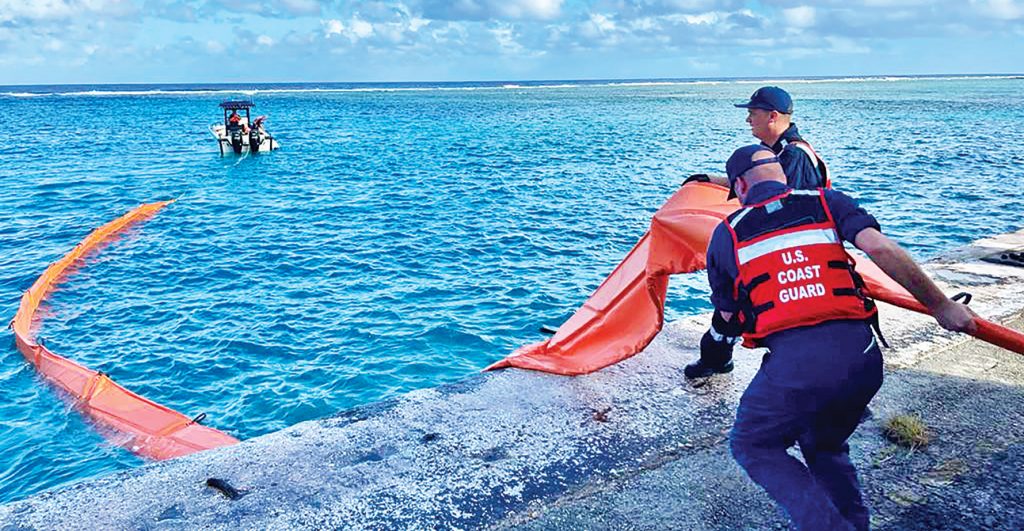Pollution response exercise on Rota, Tinian

Members of the U.S. Coast Guard Forces Micronesia Sector Guam Incident Management Division, alongside personnel from the U.S. Coast Guard District 14 Planning and Disaster Response Advisory Team, conducted a series of operations on Rota on Feb. 8, 2023. The team conducted a conducted boom deployment in the port of Rota alongside the Department of Public Safety and the Rota Harbormaster to test a proposed geographic response strategy. (U.S. COAST GUARD)
Members of the U.S. Coast Guard worked with officials on Rota and Tinian to test their response capabilities under national requirements and conduct area familiarization in the week of Feb. 6, 2023.
Members of the U.S. Coast Guard Forces Micronesia Sector Guam Incident Management Division, alongside personnel from the U.S. Coast Guard District 14 Planning and Disaster Response Advisory Team, conducted a series of operations on Rota and Tinian, part of the Commonwealth of the Northern Marianas, in the second week of February.
“As part of the national preparedness for a response exercise program, response plan holders may be required to participate in a GIUE. These exercises are pass-fail to ensure the facility team can respond to an event promptly, such as getting actual containment and exclusion boom and skimming equipment into use,” said Petty Officer 2nd Class Tomas Dunning, a marine safety technician and part of the exercise team.
On Feb. 6, the team conducted the first exercise, a Government Initiated Unannounced Exercise, or GIUE, with Mobil Rota. Mobil Rota successfully passed and is exempt from another exercise in the next three years.
On Feb. 7, the same U.S. Coast Guard team conducted a boom deployment in the port of Rota. The U.S. Coast Guard DRAT maintains two trailers of boom equipment, one on Rota and the other in Tinian, to assist local responders. Such gear is limited and not readily available on remote islands.
“[On] Rota, we used the prepositioned boom working alongside the CNMI Department of Public Safety and the Rota Harbormaster to test a proposed geographic response strategy,” said Dunning.
The team deployed 200 feet of boom in assistance with DPS’ boat and crew across the entrance to the port. The team determined the geographic response strategy would work in a real-world situation and recommended 250 feet of boom.
“This exercise allowed us to see if it was a realistic way to contain a potential discharge at the port. As a result, DPS becomes an asset familiar with the boom’s location and how to deploy it in their vessel. In a real scenario, we know DPS could reliably assist with early stages of response,” said Dunning.
On Feb. 8, the team flew to Tinian to check on the other trailer, replacing part of the hitch and identifying other items for repair or replacement, ensuring readiness. In addition, it allowed unit members to become more familiar with the region and the ports in CNMI. (USCG)























